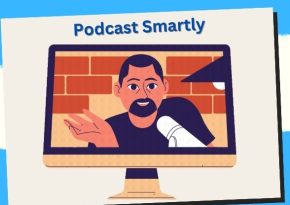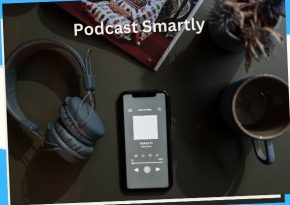
Drive Engagement with Strategic Episode Structuring for Your SEO Podcast
Ready to take your SEO podcast to the next level? Learn how to structure episodes for maximum visibility and impact.
Crafting Compelling SEO Podcast Episodes: A Guide to Structuring Your Content 🎙️
Structuring your SEO podcast episodes effectively is essential for engaging your audience, delivering valuable insights, and maximizing your podcast’s impact. In this guide, we’ll explore the key components of structuring compelling podcast episodes that resonate with your listeners and enhance your search engine optimization (SEO) efforts.
1. Define Your Episode’s Objective 🎯
Every podcast episode should have a clear objective or purpose. Are you aiming to educate your audience on a specific topic, entertain them with engaging stories, or interview industry experts? Define your episode’s objective early in the planning process to ensure that your content remains focused and cohesive.
2. Start with a Captivating Introduction 🎧
The introduction sets the tone for your podcast episode and captures your audience’s attention from the outset. Start with a hook—a compelling statement, an intriguing question, or a relevant anecdote—to pique curiosity and entice listeners to stay tuned. Introduce yourself, provide a brief overview of the episode’s topic, and outline what listeners can expect to learn or gain from listening.
3. Provide Valuable Content and Insights 💡
The heart of your podcast episode lies in the content you deliver. Whether you’re sharing tips, discussing industry trends, or analyzing case studies, ensure that your content provides value to your audience. Break down complex concepts into digestible segments, use real-world examples to illustrate key points, and offer actionable takeaways that listeners can apply to their own SEO strategies.
4. Incorporate Engaging Segments and Formats 🔄
To maintain listener interest and keep your podcast dynamic, consider incorporating various segments and formats into your episodes. These could include interviews with industry experts, audience Q&A sessions, listener success stories, or even interactive elements like quizzes or polls. Mixing up your content formats adds variety and helps prevent listener fatigue.
5. Structure Your Episode for Clarity and Flow 🌊
A well-structured podcast episode flows seamlessly from one segment to the next, guiding listeners through the content in a logical manner. Consider dividing your episode into distinct sections, such as an introduction, main content segments, and a conclusion. Use transitions, segues, and signposts to guide listeners through the episode and maintain their engagement.
6. Optimize for SEO with Keywords and Descriptions 🔍
While structuring your podcast episodes, don’t forget to optimize them for search engines. Incorporate relevant keywords into your episode titles, descriptions, and show notes to improve discoverability and attract organic traffic. Craft compelling episode titles that entice clicks and accurately reflect the content of the episode. Additionally, provide detailed show notes that summarize key points and include relevant links and references.
7. Encourage Listener Interaction and Engagement 🗣️
Engage your audience throughout the episode by encouraging listener interaction and participation. Pose thought-provoking questions, invite listeners to share their experiences or insights on social media, and incorporate listener feedback and comments into future episodes. Building a sense of community around your podcast fosters loyalty and keeps listeners coming back for more.
8. Conclude with a Strong Call to Action (CTA) 📣
As you wrap up your podcast episode, leave your audience with a clear call to action. Encourage them to subscribe to your podcast, leave a review, visit your website for additional resources, or connect with you on social media. A strong CTA reinforces listener engagement and provides a pathway for them to further engage with your brand and content.
9. Review and Refine Your Episode Structure 📝
After publishing each episode, take the time to review its performance and gather feedback from your audience. Analyze listener metrics, such as playthrough rates and audience retention, to identify areas for improvement. Solicit feedback through surveys or social media polls to gauge audience satisfaction and preferences. Use this feedback to refine your episode structure and content strategy for future episodes.
10. Stay Consistent and Evolve Over Time 🔄
Consistency is key to building a loyal audience and establishing your podcast as a trusted resource in the SEO community. Stick to a regular publishing schedule and maintain a consistent format and tone across your episodes. At the same time, be open to evolution and experimentation. As your audience grows and your expertise expands, don’t be afraid to adapt your episode structure and content to meet changing needs and interests.
Benefits of Structuring Your SEO Podcast Episodes
- Enhanced User Experience: A well-structured episode keeps listeners engaged and satisfied, fostering a positive user experience.
- Improved Discoverability: Clear episode structure facilitates search engine indexing, enhancing discoverability and SEO performance.
- Increased Retention: Structured episodes help retain listener attention by organizing content in a logical and digestible format.
- Optimized Keyword Placement: Strategic structuring allows for optimal placement of keywords and key phrases, boosting SEO relevance.
- Consistent Branding: A consistent episode structure reinforces brand identity and helps establish a recognizable podcast format.
- Facilitated Navigation: Clear episode structure enables listeners to navigate content easily, enhancing usability and accessibility.
- Monetization Opportunities: Structured episodes attract sponsors and monetization avenues by showcasing professionalism and organization.
- Established Authority: Structured content demonstrates expertise and authority within your niche, building trust with your audience.
- Effective Call-to-Actions: Well-planned episode structures facilitate seamless integration of call-to-actions, driving desired listener actions.
- Adaptability and Scalability: A defined episode structure allows for easy adaptation and scalability as your podcast grows and evolves.
Case Studies: Learning from Successful Examples
- “The Tim Ferriss Show”: Tim Ferriss structures his episodes with a consistent format, including introductions, interviews, and actionable takeaways, resulting in millions of downloads per episode.
- “The Joe Rogan Experience”: Joe Rogan’s podcast features structured segments such as introductions, guest interviews, and audience Q&A, providing a balanced and engaging listening experience.
- “SEO 101” by Search Engine Journal: This podcast follows a structured format, beginning with a brief overview of the episode topic, followed by in-depth discussions and expert insights, catering to SEO professionals and enthusiasts.
- “The GaryVee Audio Experience”: Gary Vaynerchuk structures his episodes with clear introductions, main content segments, and closing remarks, maintaining audience engagement and consistency.
- “How I Built This” by NPR: NPR’s podcast employs a structured storytelling approach, featuring introductions, narrative arcs, and insightful interviews with entrepreneurs, captivating listeners with compelling narratives.
- “Marketing School” by Neil Patel and Eric Siu: This podcast delivers concise, structured episodes under 10 minutes, focusing on actionable marketing tips and strategies, catering to time-constrained professionals.
- “The Science of Social Media” by Buffer: Buffer’s podcast follows a structured format, featuring introductions, main content segments, and key takeaways, providing valuable insights into social media marketing trends and tactics.
- “The Ed Mylett Show”: Ed Mylett structures his episodes with clear introductions, personal anecdotes, and expert interviews, offering practical advice on personal development and success.
- “Online Marketing Made Easy” by Amy Porterfield: Amy Porterfield’s podcast features structured episodes with clear outlines, actionable tips, and resource recommendations, guiding listeners through various aspects of online marketing.
- “The Tony Robbins Podcast”: Tony Robbins structures his episodes with clear introductions, motivational content segments, and actionable strategies, inspiring listeners to take positive action in their personal and professional lives.
Key Takeaways
- Define Your Episode Structure: Establish a consistent episode format that aligns with your podcast’s goals and audience preferences.
- Create Clear Introductions: Begin each episode with a concise introduction that sets the stage for the topic and engages listeners from the start.
- Organize Content Segments: Structure episodes into clearly defined segments, such as introductions, main content, interviews, and closing remarks, for easy navigation and comprehension.
- Maintain a Flow: Ensure smooth transitions between content segments to maintain listener engagement and flow throughout the episode.
- Include Actionable Takeaways: Provide actionable insights, tips, or advice that listeners can apply immediately, adding value to each episode.
- Optimize Episode Length: Strike a balance between depth of content and listener attention span by optimizing episode length for maximum impact and retention.
- Utilize Visual Aids or Summaries: Incorporate visual aids, episode summaries, or timestamps in episode descriptions to enhance accessibility and usability.
- Encourage Audience Interaction: Foster listener engagement by incorporating audience questions, feedback, or calls-to-action within the episode structure.
- End with a Strong Close: Conclude each episode with a clear summary or call-to-action that reinforces key takeaways and encourages further engagement.
- Iterate and Adapt: Continuously evaluate and refine your episode structure based on listener feedback, performance metrics, and evolving industry trends.
FAQs: Addressing Common Queries
- Q: How do I determine the best structure for my SEO podcast episodes?
- A: Consider your podcast’s goals, audience preferences, and content format when defining your episode structure. Experiment with different formats to find what resonates best with your audience.
- Q: Should I stick to a rigid episode structure or allow for flexibility?
- A: Strike a balance between consistency and adaptability. While a defined structure provides organization and familiarity, allowing for flexibility ensures responsiveness to listener feedback and evolving content needs.
- Q: How can I maintain listener engagement throughout the episode?
- A: Keep content segments concise, vary pacing and tone to avoid monotony, and incorporate storytelling, humor, or interactive elements to captivate listeners’ attention.
- Q: What role does episode structure play in SEO optimization?
- A: A well-structured episode enhances SEO by improving content relevance, user experience, and search engine crawlability. Clear headings, timestamps, and keyword-rich descriptions contribute to better search visibility.
- Q: How can I ensure my episode structure is accessible to all listeners?
- A: Provide episode transcripts, visual summaries, or alternative formats for listeners with disabilities or those preferring non-audio content consumption.
- Q: Should I vary my episode structure for different types of content or guests?
- A: Tailor your episode structure to suit the content format, guest dynamics, or special features of each episode while maintaining consistency in overall branding and format.
- Q: How can I effectively incorporate sponsorships or advertisements into my episode structure?
- A: Integrate sponsor messages or advertisements seamlessly into your episode structure, ensuring they complement rather than disrupt the listening experience. Consider designated segments or natural breaks for sponsor placements.
- Q: Can I repurpose or recycle episode structures for future episodes?
- A: Yes, repurpose successful episode structures or segments while adapting them to fit new topics, guests, or content formats. However, strive to keep content fresh and engaging to maintain audience interest.
- Q: How important is it to solicit listener feedback on episode structure?
- A: Listener feedback is invaluable for refining episode structure, identifying areas for improvement, and ensuring alignment with audience preferences and expectations.
- Q: Are there tools or templates available for creating episode structures?
- A: While no one-size-fits-all template exists, podcasting platforms, project management tools, and podcasting communities offer resources, guidelines, and best practices for structuring episodes effectively.
Conclusion
Structuring your SEO podcast episodes requires careful planning, creativity, and attention to detail. By defining clear objectives, providing valuable content, optimizing for SEO, and engaging your audience effectively, you can create podcast episodes that resonate with listeners and elevate your brand’s visibility in the competitive world of SEO podcasting. Keep experimenting, refining your approach, and staying attuned to audience feedback to ensure that your podcast continues to grow and thrive over time. 🚀
Key Phrases
- SEO podcasting
- Episode structuring
- Podcast optimization
- SEO strategy
- Audience engagement
- Content organization
- Episode planning
- Search engine visibility
- Podcast format
- SEO techniques
Best Hashtags
- #SEOpodcast
- #EpisodeStructuring
- #PodcastOptimization
- #SEOStrategy
- #AudienceEngagement
- #ContentOrganization
- #EpisodePlanning
- #SearchVisibility
- #PodcastFormat
- #SEOTechniques
DisclaimerThis information is for educational purposes only and does not constitute endorsement of any specific technologies or methodologies or endorsement of any specific products or services.📩 Need to get in touch?Feel free to Email Us for comments, suggestions, reviews, or anything else. |








Comments (0)